A Clear Guide to Double Glazed Patio Doors
Table of Contents
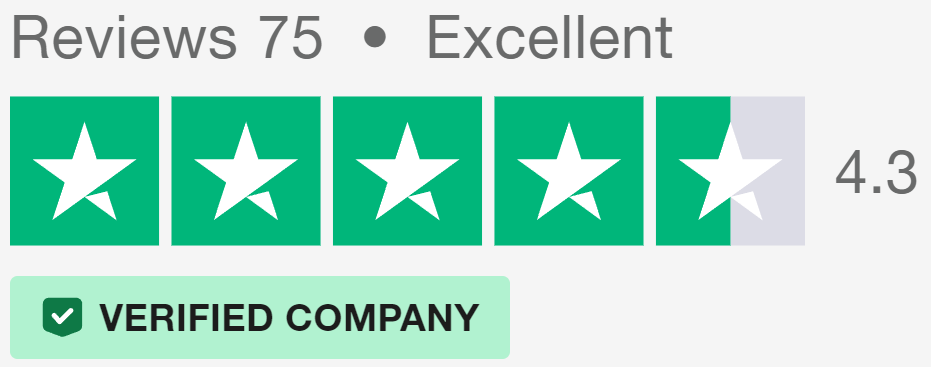
Modern double glazed patio doors combine robust insulation with smooth operation, helping you cut energy bills while making your home brighter. Our guide walks you through everything you need to know before buying.
How Double Glazed Patio Doors Work
Double glazed patio doors have evolved a lot since their introduction. Two panes of glass work together with an insulating gas layer to block heat loss and reduce outside noise. The glass panels slide or fold along precision-engineered tracks, while weatherproof seals keep draughts at bay.
Types of Opening
Sliding mechanisms remain the most popular choice for double glazed patio doors in British homes. The panels glide horizontally on rollers, with one fixed panel and one or more moving panels. You’ll need enough wall space beside the opening for the moving panel to slide across.
Bifold systems fold the glass panels like a concertina (hence why they’re often called glass concertina doors). Each panel connects to the next with sturdy hinges, letting you push all the panels to one side or split them in the middle. The whole system runs on a track fitted to your floor and lintel.
Slide and pivot doors combine features from both designs. The panels slide along the track until they reach designated points, where they can pivot out. This clever setup requires less space than bifolding doors while offering similar wide openings.
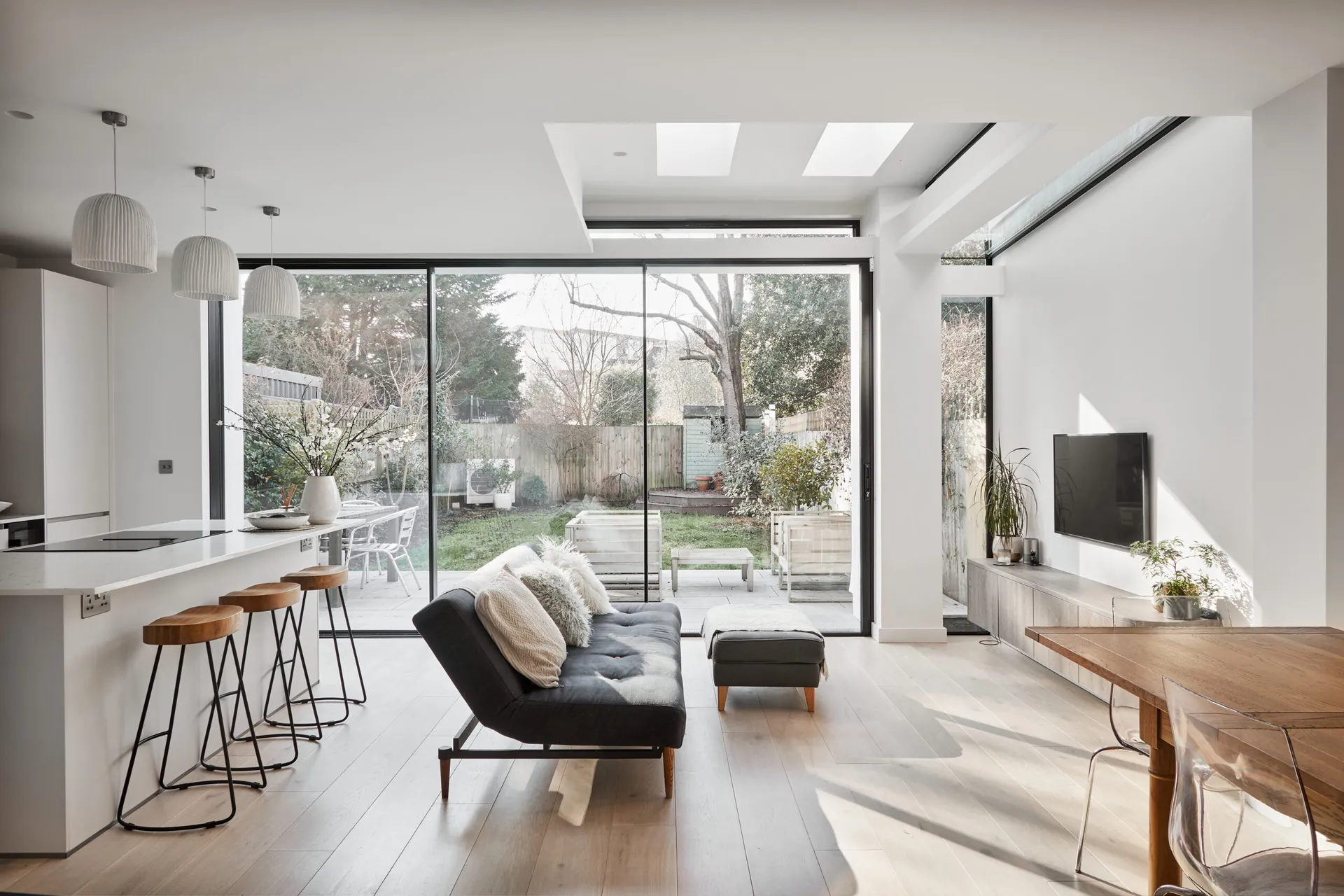
Main Components
The frame forms the backbone of double glazed patio doors, housing all other components. Modern frames come in durable uPVC, sleek aluminium, or traditional timber. Each material affects how well your doors keep heat in and how long they’ll last.
Running gear keeps everything moving smoothly. Quality rollers, guides, and bearings determine how easily your doors will open and close over years of use. Stainless steel components resist corrosion better than standard steel or plastic parts.
Locking systems do more than just secure your doors. Multi-point locks compress the seals evenly when closed, improving insulation and preventing draughts. Look for locks tested to PAS 24 standards – this means they’ve passed strict security tests.
Ergonomic handle designs reduce the force needed to open heavy glass panels. Many handles now include key-locking cylinders for extra security when you’re away.
What Makes Quality Double Glazed Patio Doors?
Double glazed patio doors rely on several key components working together to keep your home warm and secure. Small details in materials and construction make a big difference to how well they perform over time.
Frame Materials
Modern external glass doors come in three main frame materials, each with unique properties. uPVC frames need minimal maintenance and provide good insulation at lower costs. Double glazed sliding doors in aluminium offer slim sightlines and strength, though they cost more initially. Timber frames bring natural beauty and excellent insulation, but need regular upkeep to prevent warping.
Aluminium patio doors have improved greatly in recent years. Polyamide thermal breaks now often separate the inner and outer frame sections, preventing cold from travelling through the metal. This makes them as energy efficient as other frame types while keeping their slim profile.
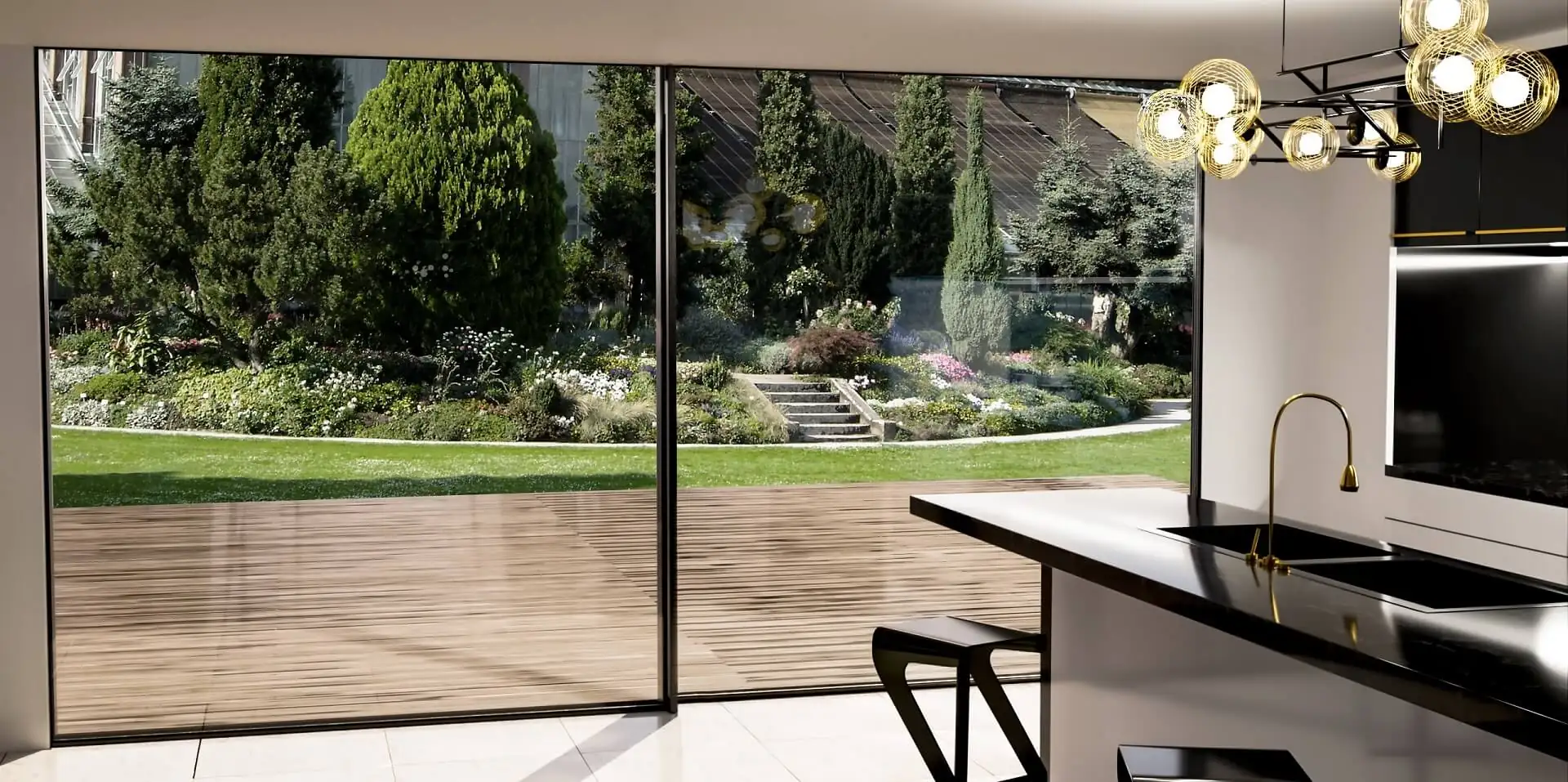
Weather Protection
Glass patio doors with internal blinds solve several problems at once. The blinds sit between the glass panes, protected from dust and damage. They never need cleaning and won’t clatter against the glass in breezes. Some systems let you raise, lower, and tilt the blinds using a magnetic slider on the frame.
Hardware Quality
A multi-point locking mechanism secures the door at several points along the frame when you turn the key. This spreads the force evenly, pulling the door tight against its seals for better security and insulation. Double glazed patio doors should have at least three locking points – more for taller doors.
High-quality running gear keeps double glazed sliding doors moving smoothly for years. Stainless steel wheels resist corrosion better than standard steel or nylon, while precision bearings reduce the effort needed to open even large panels. The tracks themselves should have drainage channels to prevent water buildup, which could otherwise cause sticking or damage.
Different Glass Options for Double Glazed Patio Doors
Modern double glazed patio doors offer multiple glazing options, each with distinct benefits for comfort and energy bills. The right choice depends on your specific needs for warmth, noise reduction, and budget.
Temperature Control
On cold winter mornings, double glazed glass doors prove their worth through improved thermal efficiency. Single glazing struggles to retain heat, letting up to 50% more warmth escape compared to double glazing. Triple glazing adds a third pane and extra gas layer, cutting heat loss by around another 20% – but costs more upfront.
The spacer bars between glass panes play a key part in stopping heat escape. Cheap aluminium spacers conduct cold from outside to inside. Better-quality plastic composite spacers block this heat transfer, reducing condensation around the edges of double glazed sliding doors.
Sound Reduction
Double glazed patio doors dampen sound waves through their multiple layers. Different glass thicknesses work together to break up noise patterns – for example, combining 6mm and 4mm glass reduces sound more effectively than two 5mm panes.
Cost vs Performance
Initial prices vary widely based on size and specification. Basic double glazed patio doors cost less than half the price of triple glazing, while delivering most of the benefits. High-performance options like gas-filled units with Low-E coatings pay back their extra cost through lower heating bills.
Aluminium slimline sliding doors might cost more upfront than uPVC, but their slim frames let in more light and last longer. Modern thermal break technology stops aluminium frames from conducting heat away, matching the insulation levels of other materials.
Double Glazed Patio Doors: Technical Overview
Double glazed patio doors work through simple physics: two panes of glass trap an insulating layer of gas between them. This basic principle creates a highly effective barrier against heat loss and noise.
How Double Glazing Works
The space between glass panels in double glazed sliding glass doors typically measures between 12 and 20mm. Air or another gas fills this gap. Top-quality large sliding doors often use argon or krypton gas – it’s denser than air and moves more slowly, reducing heat transfer between the panes.
Heat always moves from warm areas to cold ones. In winter, your home’s warm air tries to escape through the glass, while cold air attempts to enter. The trapped gas layer disrupts this process. The thermal breaks in the frame provide extra insulation by separating the inner and outer frame sections with a poor heat conductor.
Glass Types and Spacing
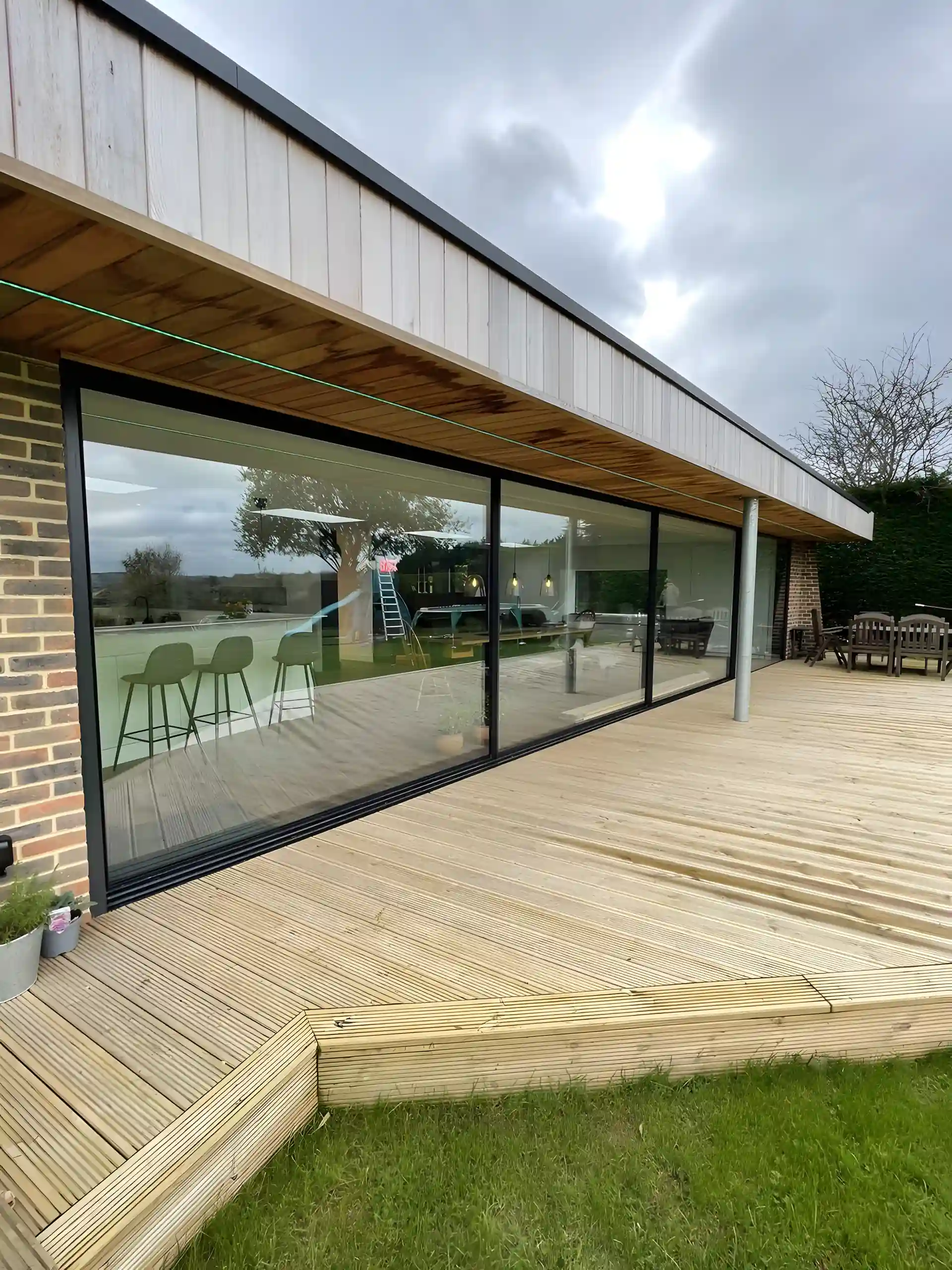
Low-E glass takes thermal performance to another level. One pane receives an invisible metallic coating that bounces heat back into your room, much like a mirror reflects light. Modern double glazed patio doors combine Low-E glass with warm edge spacer bars, which keep the panes apart while reducing heat loss around the edges.
The glass itself comes in several grades. Toughened safety glass withstands impacts and breaks into small, rounded pieces if damaged. Laminated glass adds a plastic interlayer that holds broken pieces together, making it suitable for areas where security matters most.
Looking beyond standard clear glass, solar control options help manage temperature year-round. These specialised coatings let natural light through while blocking unwanted heat from the sun. Double glazed sliding doors with solar control glass work particularly well in south-facing rooms, keeping them comfortable through summer without losing warmth in winter.
Different glass combinations suit different needs. Acoustic glass features varying thicknesses between the panes, disrupting sound waves more effectively. Some double glazed patio doors incorporate self-cleaning glass, which uses sunlight to break down dirt and relies on rain to wash it away – particularly useful for tall doors that are hard to reach.
Designing with Double Glazed Patio Doors
Double glazed patio doors shape how you use and view your outdoor space. Small details in design and colour affect both appearance and practicality in different rooms and house styles. Light levels, furniture placement, and traffic patterns need careful thought during the planning stage.
Kitchen-Diners
White sliding patio doors remain popular in kitchen-diners, bouncing light deep into the room while matching most colour schemes. Darker frames create striking contrast – black patio doors draw attention to garden views and suit industrial-style interiors. Double glazed sliding doors with side panels let extra light into narrower openings without taking up valuable wall space.
Modern sliding kitchen doors often incorporate mid-rails that align with kitchen worktops, creating visual harmony. Some homeowners opt for different frame colours inside and out – perhaps anthracite grey outside to match the windows, with crisp white inside to complement kitchen units.
The position of kitchen islands affects door placement. Allowing at least 1.5 metres between island edges and double glazed patio doors ensures comfortable movement. Corner units need special attention – L-shaped layouts might benefit from offset door positions that preserve storage space while maintaining good garden access.
Living Rooms
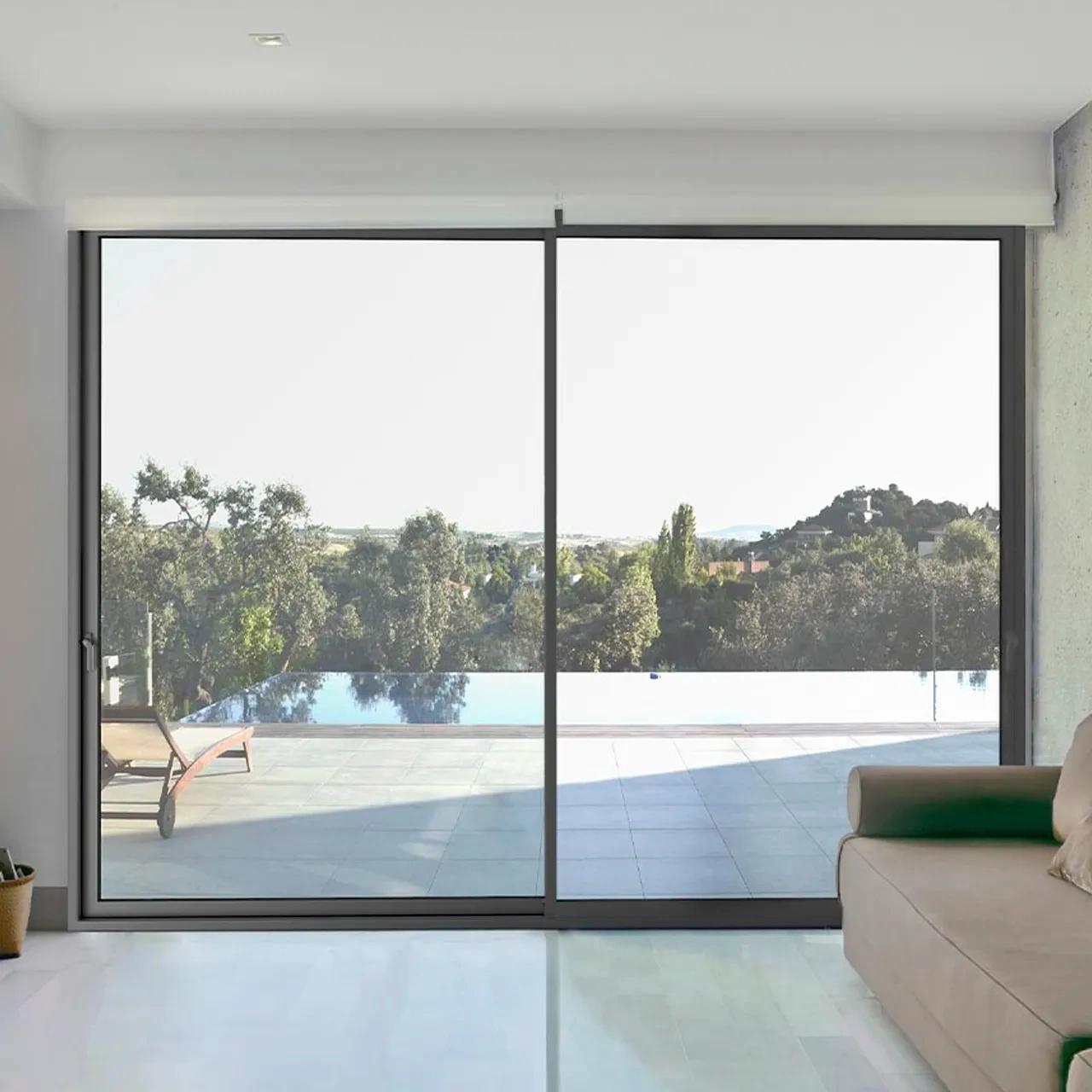
Living rooms benefit from wider double doors that open fully in summer. Double glazed sliding doors spanning larger openings need more substantial frames for stability, yet modern designs keep sight lines slim. Panel configurations affect both looks and practicality – a three-panel setup with the center panel sliding offers good access while keeping furniture options flexible.
Furniture placement near patio doors double glazed units requires thought. Sofas work well positioned at right angles to the doors, creating natural walking routes while maintaining views. Low-backed chairs placed parallel to exterior doors let light flow over them into the room.
Morning sun through east-facing double glazed patio doors might need managing. Integral blinds between glass panes offer one solution, while external awnings or pergolas provide shade without blocking views. West-facing rooms might benefit from solar control glass to reduce afternoon heat gain.
Period Properties
External doors in period homes need careful planning to look appropriate. Many Victorian and Edwardian properties suit double glazed patio doors with details that echo their era – like glazing bars or traditional hardware. Georgian-style houses often look best with patio doors double glazed to match existing window patterns.
Timber frames tend to win planning approval more easily in conservation areas. The range of colours available for wooden exterior doors lets you match original features exactly. Some manufacturers offer heritage-style double glazed sliding doors with authentic-looking joints and proportions, helping new doors fit with older architecture.
Original bay windows converted to doors present unique challenges. Supporting lintels need careful specification, while frame styles should mirror existing window designs. Double glazed patio doors in bay conversions often work best with side panels that maintain the bay’s original proportions.
Listed buildings and conservation areas might restrict your options for door styles and materials. Local planning offices often prefer timber over modern materials, though some high-quality aluminium systems now replicate traditional designs convincingly. Paint colours for outdoor space-facing surfaces might need approval too.
Design Details
Handle styles and frame finishes affect the overall look. Brushed steel suits contemporary spaces, while brass or chrome hardware complements traditional homes. Tall double glazed patio doors might need a mid-rail for structural strength – this horizontal bar can be positioned to create balanced proportions or line up with other elements in your room.
Frame width influences both aesthetics and performance. Slim frames let in more light but might limit the size of sliding panels. Wider frames support bigger glass areas and offer better insulation. Some systems combine the best of both – slim sightlines with concealed strength in the outer frame.
Threshold design impacts daily use. Low thresholds improve access but need good drainage to prevent water ingress. Rebated thresholds offer better weather protection at the cost of a small step.
Installing Double Glazed Patio Doors
Double glazed sliding patio doors need proper installation to perform well. Poor fitting leads to draughts, sticking panels, and security weak points. A professional survey before ordering helps avoid costly mistakes and ensures your doors will work smoothly for years.
Measuring Up
Accurate measurements matter more than you might think. Double glazed sliding patio doors need precise fitting to slide properly – even small errors can affect operation. The aperture needs checking for square at multiple points, as many older houses have settled unevenly over time.
Wall construction affects how your doors are fitted. uPVC patio doors need strong fixings into brick or blockwork, while timber-frame buildings might need special attention to prevent movement. Large double glazed sliding patio doors often require additional structural support above the opening – especially when replacing a window with a door.
Building Regulations
Current regulations set strict standards for thermal performance and safety glazing. Double glazed patio doors must achieve specific U-values for heat retention, while glass in doors needs toughening or laminating to prevent injury if broken. Key measurements like threshold height and clear opening widths also face regulation, particularly in new extensions.
Aluminium doors often excel at meeting building regulations due to their strength and modern thermal breaks. Fire escape routes need particular attention – some rooms require specific clear opening sizes that affect your choice of door style and configuration.
Installation Requirements
Proper installation starts with a level base. Doors sitting on uneven surfaces will stick and strain their mechanisms. Steel lintels above larger double glazed patio doors need proper support and insulation to prevent cold bridging.
Good drainage prevents water pooling around thresholds. Some sites need additional channels or soakaways to handle heavy rain. Your installer should also check the cavity tray above the opening directs water properly away from the frame.
Pre-Installation Checks
Wall cavities need proper closing around door frames to maintain insulation and damp protection. Different materials need different approaches – brick slip cavities work well with some frames while full-width closers suit others. Debris in the opening can hide problems, so thorough cleaning helps spot potential issues before the double glazed patio doors go in.
We’d Love to Help You
Vision Glass Doors is a designer, manufacturer, and installer of premium door systems. We are a family run business with over 20 years’ experience and 5,000 installations across the UK.
Our leading range of door systems include Ultra Slim – Slide and Turn Doors, Slimline Sliding Patio Doors and Frameless Glass Doors. Suitable for various internal and external applications, they are applicable to residential and commercial projects.
Click Quick Quote Online for a free quotation within 24 hours. Alternatively, call or email us on 01582 492730 or at info@visionglassdoors.co.uk.

